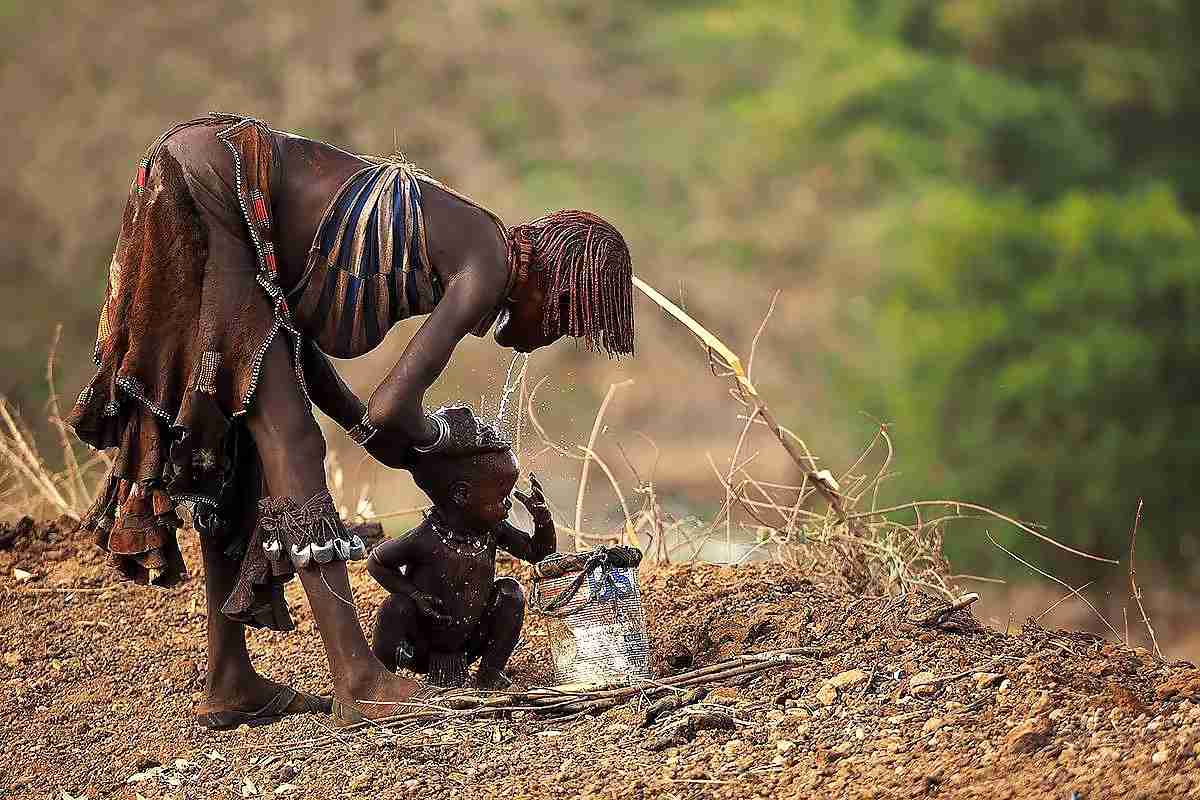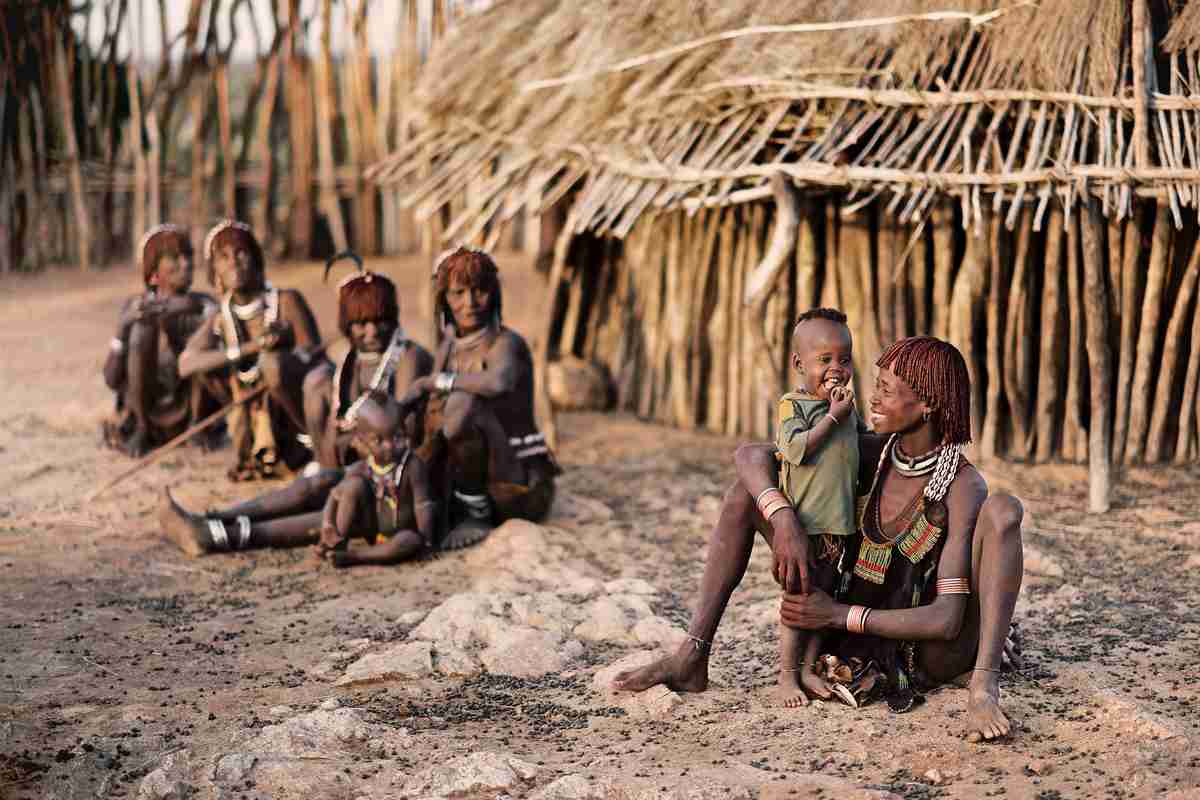The Hamer Tribe
Nestled in the heart of Ethiopia's Omo Valley, the Hamer Tribe stands as a living testament to the rich cultural diversity that characterizes this region. This tribe, known for its vibrant traditions, unique rituals, and striking aesthetics, offers a captivating window into the world of one of Africa's most fascinating indigenous communities.
Embrace the beauty of cultural diversity and enrich your understanding of the world! Learning about different cultures is an enriching journey that broadens our perspectives, fosters empathy, and fosters respect for one another. It allows us to appreciate the unique traditions, values, and customs that shape the identity of various communities around the globe. Learn about the Hadza Tribe, the Sami, the Akha People, the Aymaraes, the Kazakh People and the Adivasi on AmplifyGlobe.

The Hamer People and Their Language
To begin our exploration, it's essential to understand the Hamer people and their language. The Hamer Tribe is part of the larger Omotic group and primarily resides in the southwestern part of Ethiopia. Their language, known as Hamer-Banna, is a distinct member of the Omotic language family, and it serves as the primary mode of communication within the tribe. While Amharic, Ethiopia's official language, is also spoken by many Hamer people, Hamer-Banna remains at the core of their cultural identity.
The Hamer Way of Life
The Hamer Tribe's way of life is deeply rooted in pastoralism, with cattle playing a central role in their daily existence. Cattle are not only a source of sustenance but also a symbol of wealth and status within the tribe. Herding and taking care of livestock are essential activities for the Hamer people, and their livelihoods depend on the well-being of their cattle.
Transitioning to a more settled lifestyle has been an ongoing process for the Hamer people. As a result, some Hamer individuals now engage in farming as well. This shift has allowed them to diversify their food sources and income streams, reducing their reliance solely on cattle.
Social Structure and the Bull Jumping Ceremony
The Hamer Tribe's social structure is organized around age sets, with each age set or group known as a "maza." This system defines social roles, responsibilities, and expectations. A significant event in the life of Hamer men is the bull jumping ceremony, known as the "ukuli" or "bull leaping." This rite of passage is an essential part of Hamer culture, marking the transition from boyhood to manhood.
During the bull jumping ceremony, a young man must successfully leap over a line of cattle without falling. This act demonstrates his physical prowess and courage. The ceremony is also an opportunity for young women to show their support for the young men by singing and dancing. It is a communal celebration that unites the tribe, reinforcing the importance of unity and tradition in Hamer society.
Adornment and Aesthetics
The Hamer people are renowned for their distinctive and colorful attire. Both men and women adorn themselves with beaded jewelry, elaborate hairstyles, and body paint. These adornments are more than just decorative; they hold cultural significance. Beaded necklaces, bracelets, and headpieces are indicative of social status and can represent a person's age and marital status.
The elaborate hairstyles of Hamer women are created using a mixture of red ochre, butter, and other natural elements. These hairstyles serve as a form of self-expression and are often seen as a source of beauty. Body painting is also a common practice among the Hamer, using natural pigments to create intricate designs that reflect their identity and heritage.
Marriage Customs and Beauty Standards
Marriage is a significant aspect of Hamer culture, and their customs surrounding it are both unique and compelling. In Hamer society, men are allowed to have multiple wives. Marriages are often arranged by the families, and bridewealth, which typically includes cattle, is exchanged. This practice reflects the high value placed on cattle within Hamer culture and is a testament to the importance of livestock in their society.
The Hamer people have a tradition called "mingi," which refers to a child born out of wedlock or a child with any abnormalities. In some cases, these children are considered bad luck and are left in the wilderness to die. While this practice has drawn international attention and criticism, it is crucial to understand that the Hamer people view it as necessary for the survival of their community. They believe that the presence of a "mingi" child can bring misfortune and even harm to the tribe.

Challenges and Preservation of Culture
The Hamer Tribe, like many indigenous groups worldwide, faces numerous challenges in the modern world. Encroachment by outside forces, changing environmental conditions, and government policies have all contributed to the disruption of their traditional way of life.
The Hamer people's ability to adapt and preserve their cultural heritage in the face of these challenges is a testament to their resilience. Many Hamer individuals have become involved in the tourism industry, offering tourists a chance to experience their culture and traditions firsthand. While this has brought economic opportunities, it also raises questions about the potential impact on the integrity of their customs and the potential for exploitation.
Conclusion
The Hamer Tribe is a captivating and resilient community that offers a unique window into the cultural diversity of Ethiopia. Their traditional way of life, marked by pastoralism and age-based social structures, is intertwined with colorful adornments and rich rituals. The bull jumping ceremony, distinctive beauty standards, and complex marriage customs all contribute to the tapestry of their culture.
While the Hamer Tribe faces numerous challenges, including the impact of modernity and changing environmental conditions, their efforts to adapt and preserve their way of life showcase their resilience. As we look to the future, it is essential to support initiatives that respect and celebrate the Hamer people's cultural heritage while addressing the challenges they face. In doing so, we can help ensure that the Hamer Tribe continues to thrive as an essential part of Ethiopia's cultural mosaic.